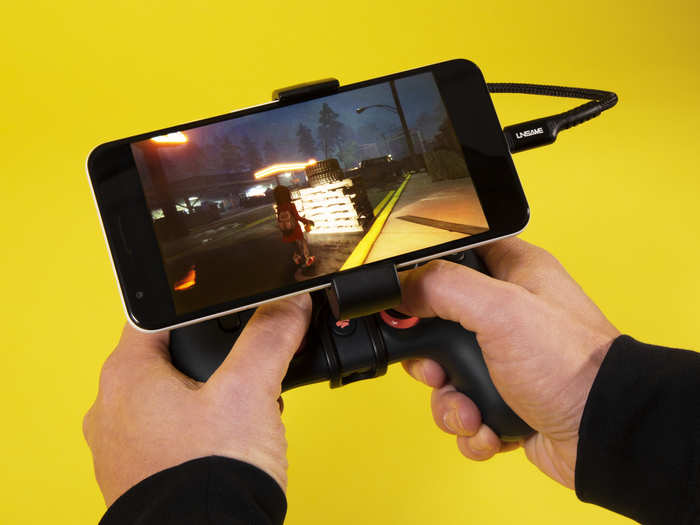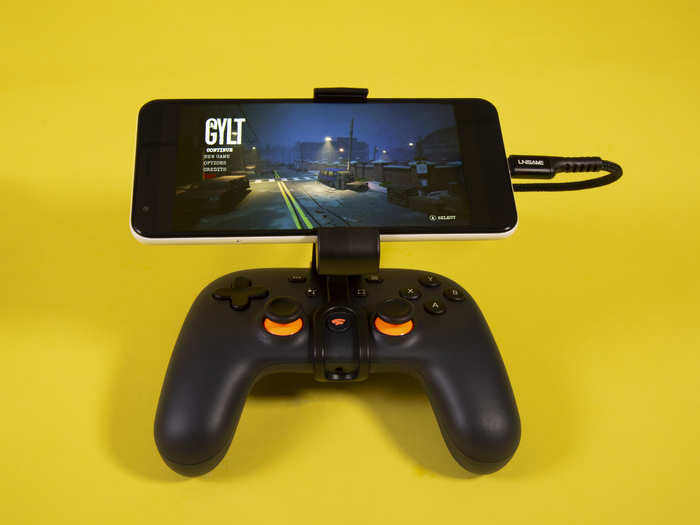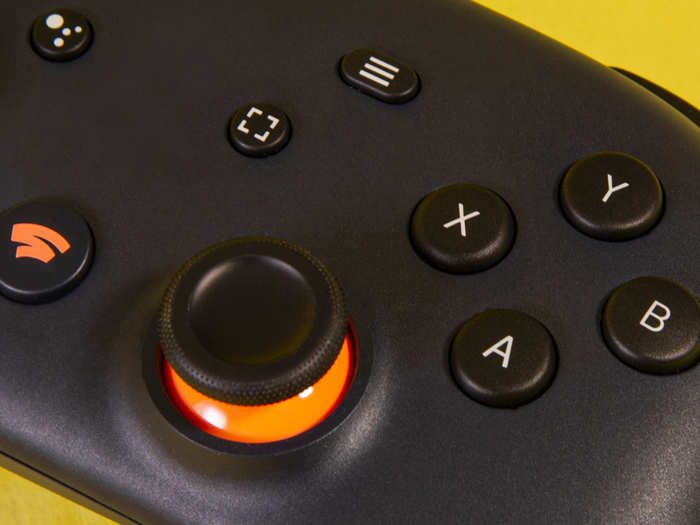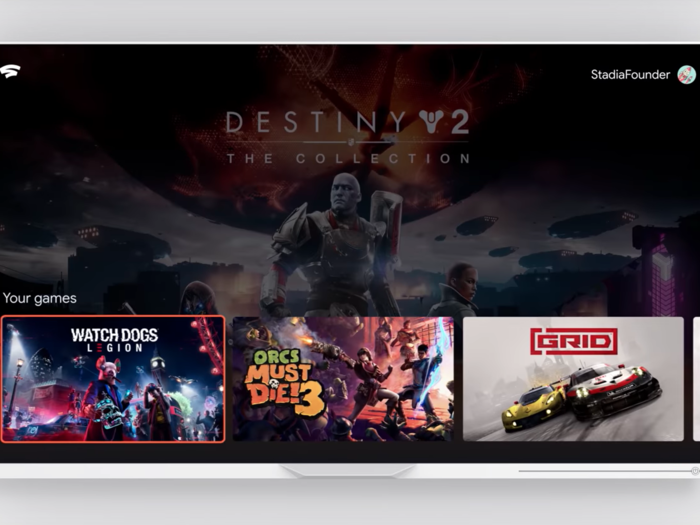- Home
- slideshows
- miscellaneous
- I've been playing games on Google's ambitious new Netflix-like game service for the last week, and it's clear the service isn't ready for primetime
I've been playing games on Google's ambitious new Netflix-like game service for the last week, and it's clear the service isn't ready for primetime
Let's start with the basics: What is Stadia?

But what is it like actually using Stadia? It works!

I've used Stadia on my home internet through a Chromecast Ultra, with games running on my TV, and I've used Stadia on my Pixel 3a smartphone.
The big question is: Does it work? The short answer is yes, Stadia totally works.
This is a crucially important question at the heart of Stadia and any other attempt at Netflix-style video game streaming services. For decades, game consoles have relied on physical or digital media to run games. That tradition continues with the latest generation of consoles: The Xbox One, PlayStation 4, and Nintendo Switch. All three consoles rely on either physical or digital media to run games.
Not so with Google Stadia — games are run remotely from Google's data centers, and then streamed to your device. You press a button, and the input is registered and sent back to Google's data centers.
This difference begs the question: Does it work?
The vast majority of my experience with Stadia — especially at home, on stable wireless that only I'm using — has been seamless and positive. Games run as if they were running locally, and it's quite impressive.
That experience changed pretty dramatically at Business Insider's main office, which has outrageously fast internet. Though the connection is fast, there are far more people using it. Moreover, our newsroom is filled with computers and smartphones that are all using wireless signals.
In that environment, Stadia was a messy experience. Games were choppy and inconsistent, which is especially jarring when a game is being streamed — whole sections got skipped over as the service attempted to keep me current with whatever the game was showing. This is hugely problematic if you're playing a game that depends on reactionary input like, say, "Mortal Kombat 11" or "Destiny 2."
Outside of the core functionality of Stadia — streaming games — almost nothing else is ready for the spotlight.

Google has been testing Stadia functionality for several years now, and even held a public beta test when the service was known as "Project Stream."
Even then, when it was just a test, the service was impressive — I was easily able to attach a gamepad to my MacBook and stream "Assassin's Creed Odyssey."
The big remaining question, then, was focused on Google's ability to create a bigger video game platform: An operating system, a storefront, and all the functionality that people expect from such a platform.
In short: If you're buying a game console in 2019, there are certain expectations that come with the purchase. Stuff like a unified friends list across games, the ability to party up with friends, achievements, and screen capture are all included on that list of expectations.
The vast majority of those expectations aren't met with Stadia — at least at launch.
A friends list exists, but there's no way to party up with friends playing on smartphones. Achievements are tracked, but there's no way to see them. Google says this stuff is coming, but neither is ready for launch.
The most foundational functionality of Google's Stadia app isn't even ready: When you spin your phone into landscape mode to play games, the app's UI stays in portrait mode. Even though games know to display in landscape mode, Stadia's UI does not.
It's the kind of little missed detail that feels like no one actually tested Stadia before launch.
How's the controller? It's pretty good!

One aspect of Stadia that requires no caveats: the gamepad.
Google's Stadia gamepad is just as good as those found on Nintendo's Switch, Sony's PlayStation 4, and Microsoft's Xbox One.
It's not doing anything particularly innovative or different — it's just a perfectly good, traditional gamepad.
The only issue I've run into with the Stadia controller isn't the controller's fault: If you're using the controller with Stadia on a smartphone, it's unable to navigate any of the system level UI.
Here's one incredibly weird example: If I'm in a game, and I want to exit the game to play another, I hold down the Stadia button which brings up the "Exit Game" option. But I'm unable to select "Exit Game" from the menu with the gamepad — I can only select it by tapping on my phone screen. After doing that, the phone exits to the Stadia desktop ... which I'm unable to navigate with the gamepad in any way, even to select another game to play.
It's one of a million little details that Google hasn't worked out just yet with Stadia.
From the paltry list of just 22 launch games to the lack of device support to the overall under-baked feeling of using the service, nothing about Google Stadia feels ready for primetime just yet.

Of the 22 games launching with Stadia on March 19, three of them are "Tomb Raider" games. A single game, "Gylt," is both new and exclusive to Stadia. The flagship game, "Destiny 2," is years old.
Games sell game consoles and, based on the launch lineup, there are few reasons to get Stadia right now.
The much, much bigger problem though is Google's approach to Stadia. It's a classic Google move to release an unfinished project and then polish it over time — look at everything from Gmail to YouTube for evidence of that approach.
"We always start with nailing the key user-journey and then proceed with releasing extra features," Stadia product lead Andrey Doronichev said in the Reddit AMA last week. "YouTube started with 'watch video.' For Stadia it's 'Play the Game on your biggest screen.' New features will start popping as soon as one week after launch."
It's an approach that might work with a free service like YouTube, but it's less palatable when you're shelling out over $100 at the launch of a new product — to say nothing of the cost of each game. Though it's entirely possible that Google will iron out Stadia's issues over the coming months, it's clear that now — at launch — the service isn't ready for primetime.
Popular Right Now
Popular Keywords
Advertisement